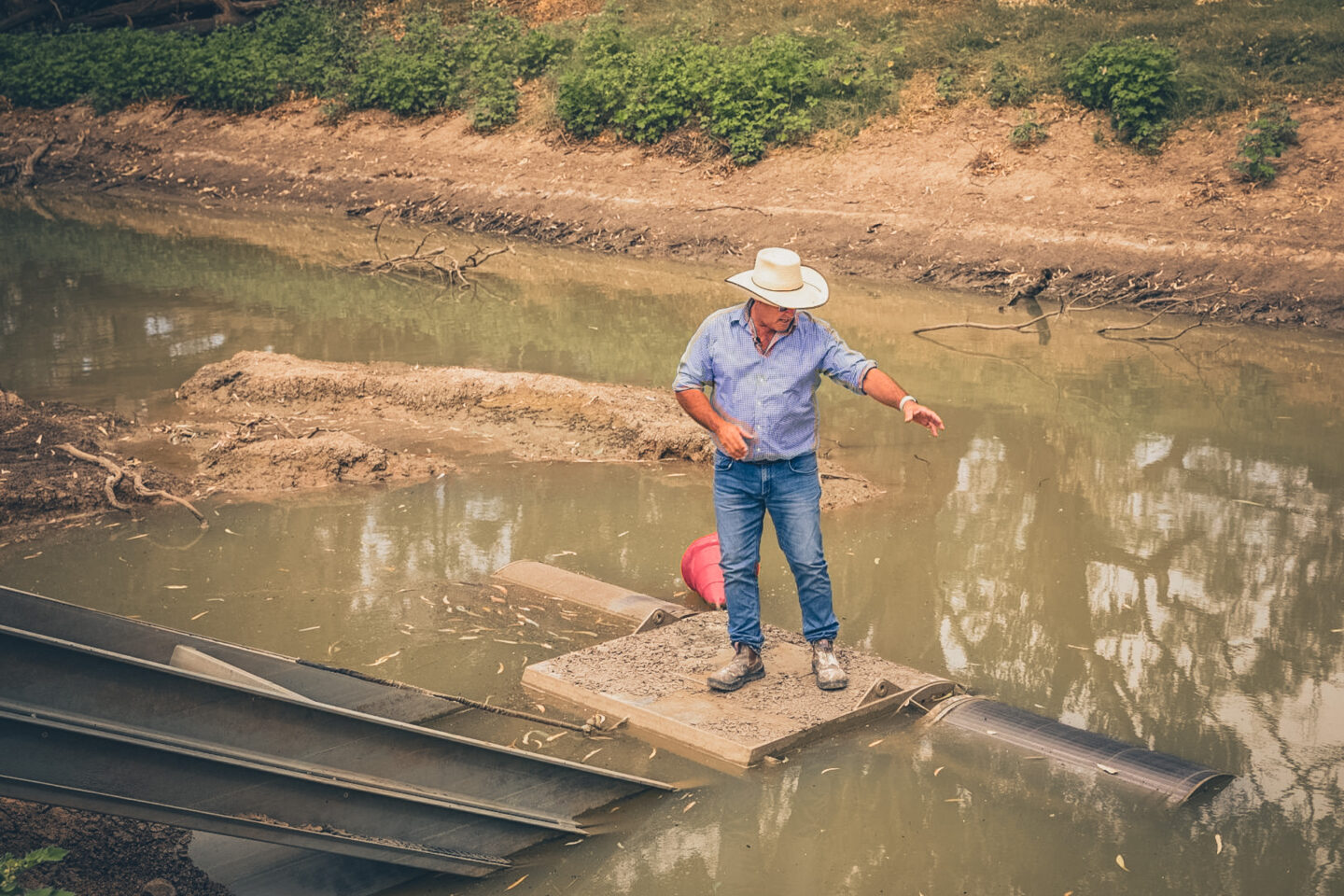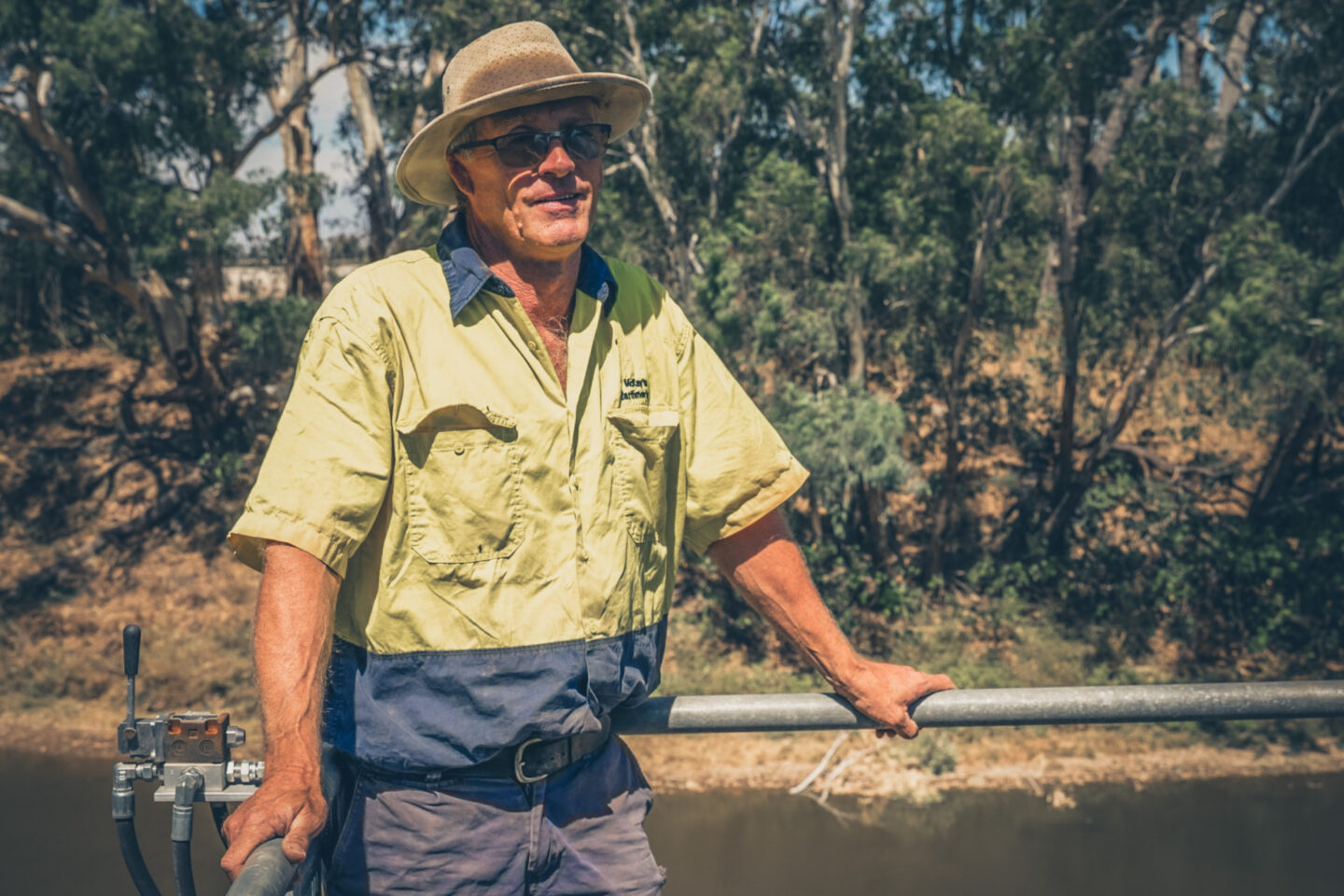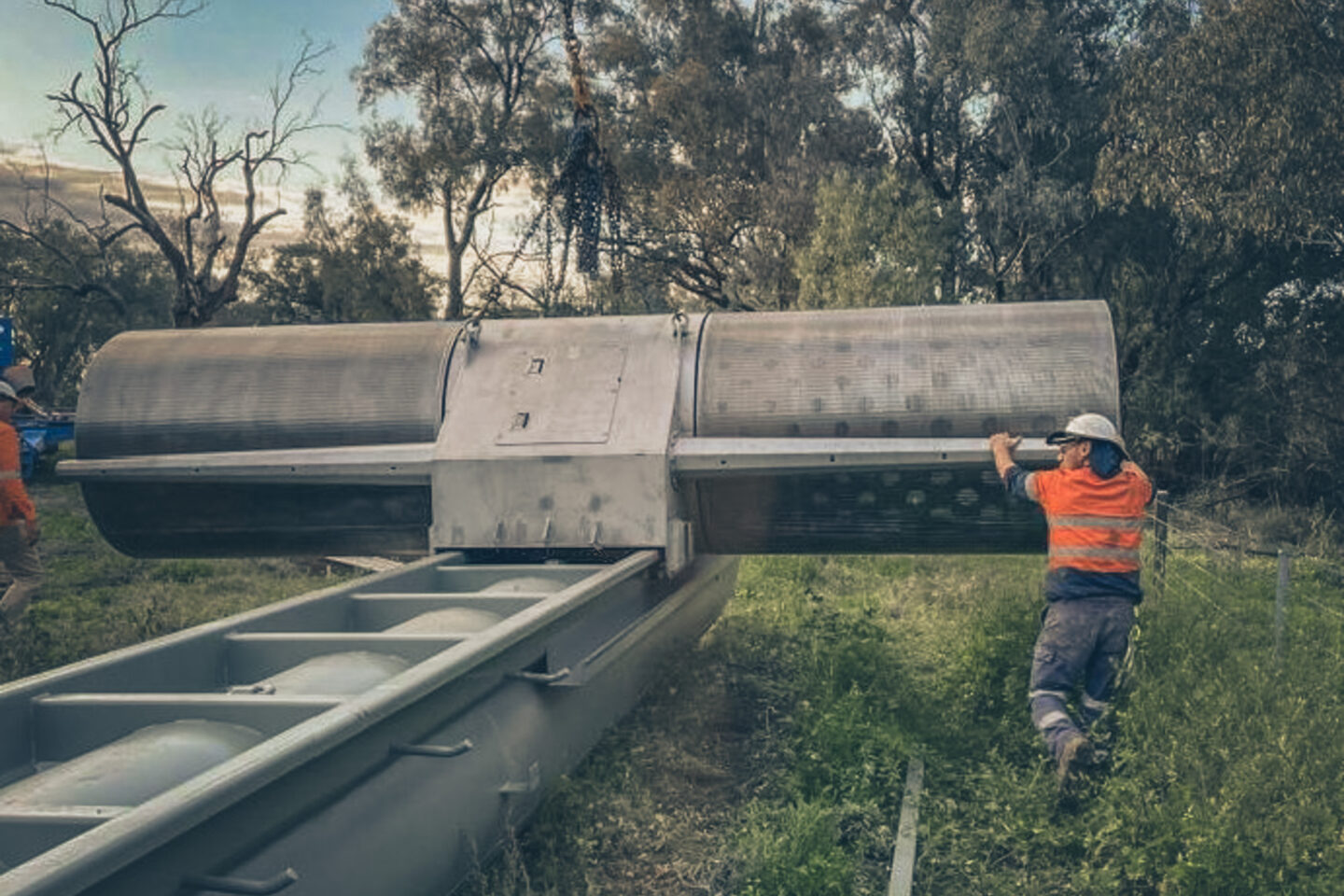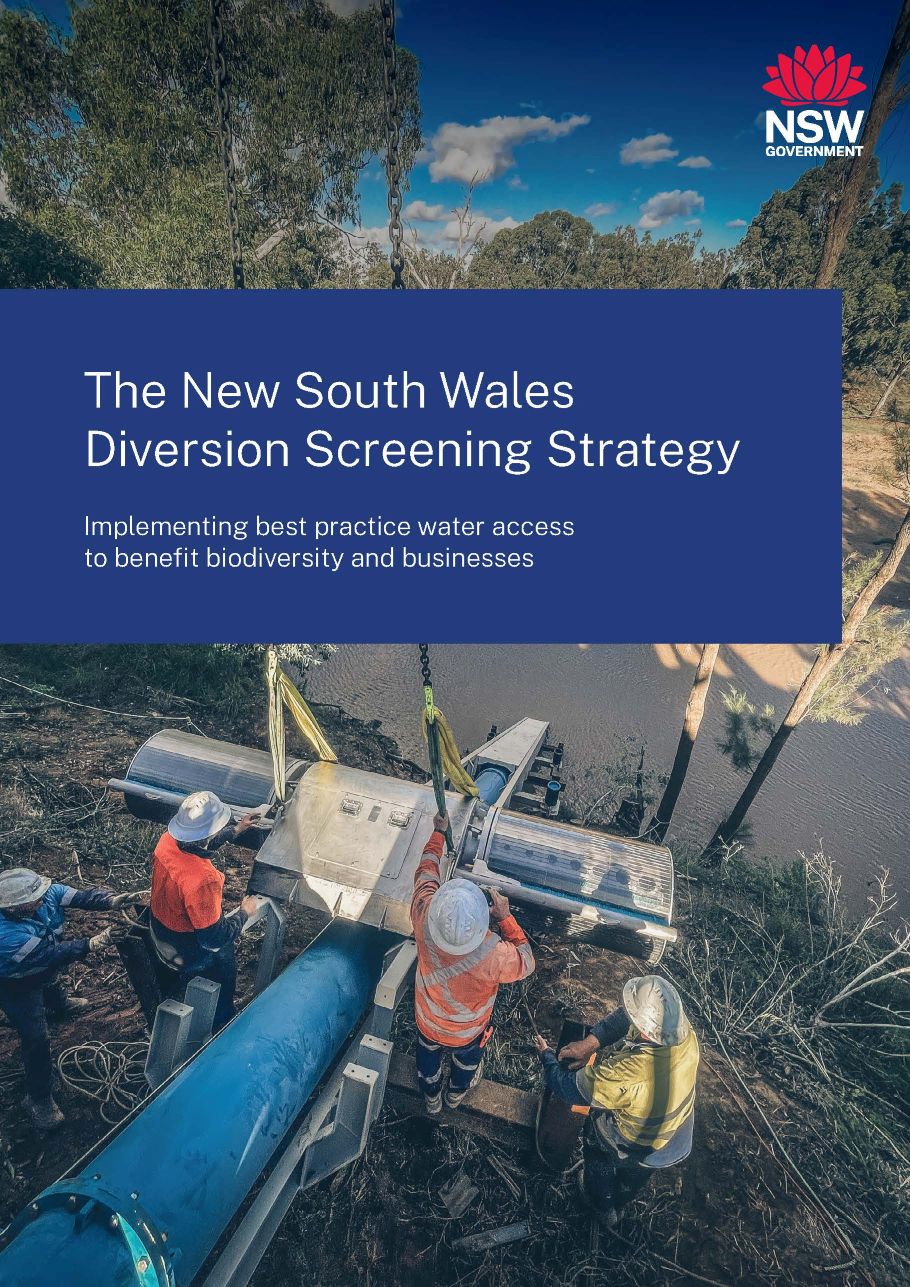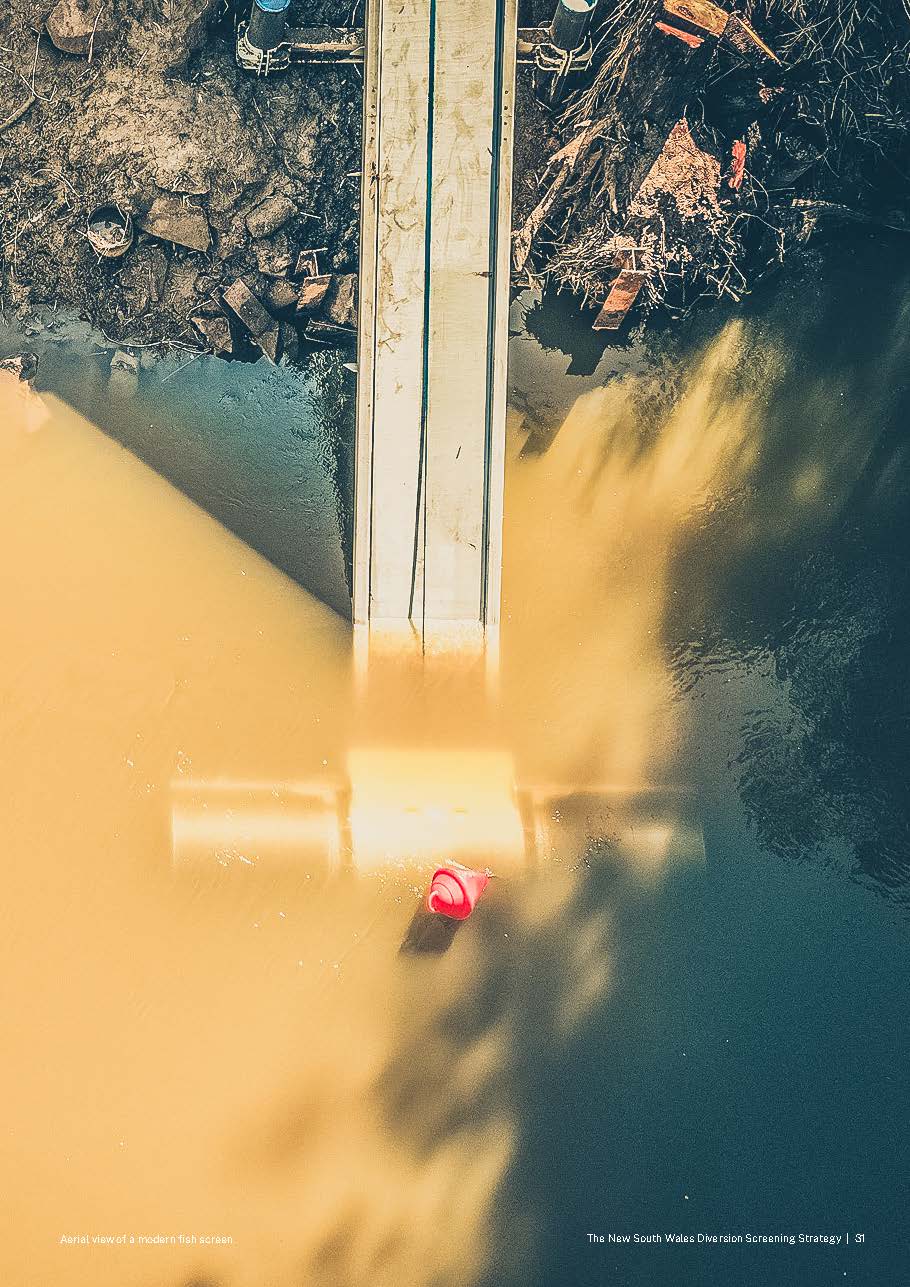SCREENS IN ACTION
Modern fish screens are being installed now
Many water users want a screen that works – one that benefits their business and the environment. We’ll keep you across new installations and share the stories of these screening champions.
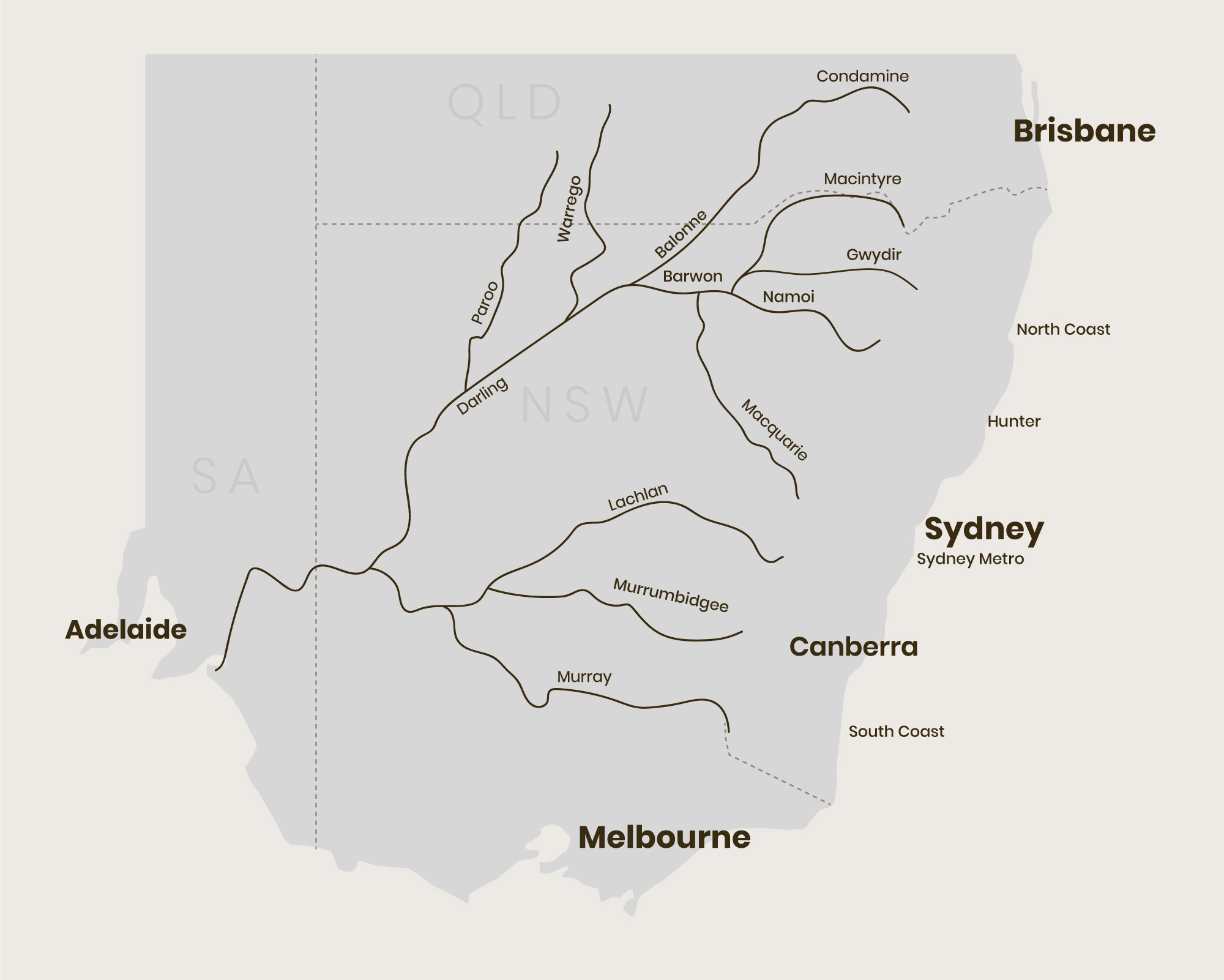
INSTALLED TO DATE IN NSW
40+ sites modernised
23,000+ ha supported
1,000,000+ native fish protected/yr
BETTER FARMING, BETTER FISHING
Self-cleaning intake screens for water pumps and channels
 save water & power
save water & power
 reduce fish losses by 90%
reduce fish losses by 90%
 self-cleaning
self-cleaning
 low maintenance
low maintenance
 made in Australia
made in Australia
 10+ years of local R&D
10+ years of local R&D
LATEST SHOWCASE SITES
Innovative water users, protecting fish and farms.
FISH SCREENS AUSTRALIA
Making technology accessible
Fish Screens Australia is an information hub featuring the latest information on screening, from fisheries, university and industry experts.
It’s built on strong science, real collaborations and the determination to create a sustainable future for agriculture and fishing.
The goal is to raise awareness of best-practice screening technology, by getting the right information into the hands of Australian water users.
Together we can create a multi-billion dollar industry to boost regional economies.
Find out more about Fish Screens Australia
MODERN SCREENS
A better way to access water
Water users need a reliable supply of water, but waterways are full of sticks, leaves, animals and other debris. This gets sucked into pumps and diverted down channels.
The problem is, most gravity-fed channels are not screened and the majority of pumps currently use traditional screens that are not as effective as they could be.
Modern screens are self-cleaning, low maintenance and engineered for performance. They reduce the need to back-flush lines, replace filters and clear sprinklers.
Any diversion can now be screened effectively. The key is to reduce the velocity, but not the volume, of water entering the intake.
NSW DIVERSION SCREENING STRATEGY
Best practice for businesses and biodiversity
The NSW Government has released a new strategy to support adoption of modern fish-protection screens across the state.
The strategy outlines progress made to date in the northern NSW Murray-Darling Basin and highlights the need to extend these benefits into other areas, particularly 111 large-volume diversions that account for 60% of water use.
The strategy also describes a series of actions to continue the collaborative implementation of modern screens, utilising expertise across science, engineering, manufacturing and on-ground installers.
See the full strategy on the NSW DPIRD Fisheries website.
THE BENEFITS
Better farming
Modern screens provide cleaner water. This means more efficient water-transport and irrigation technology can be used. Farmers can grow more using less.
Better fishing
Modern screens can reduce losses of native fish by 90%. They mean other conservation efforts are not wasted. More fish means better fishing.
Stronger towns
Modern screens help keep money in local towns. They can save farmers money, create manufacturing and retail jobs, and boost tourism.
Screens protect native fish and eliminate debris.
A NEW BEST PRACTICE
A practical guide
NSW DPI has published a guide to modern screening in Australia. It covers the main factors that need to be considered when considering a screening project.
Design specifications
Accompanying the guide are a set of design specs. These go into more detail on what’s involved in building screens to protect native fish.














